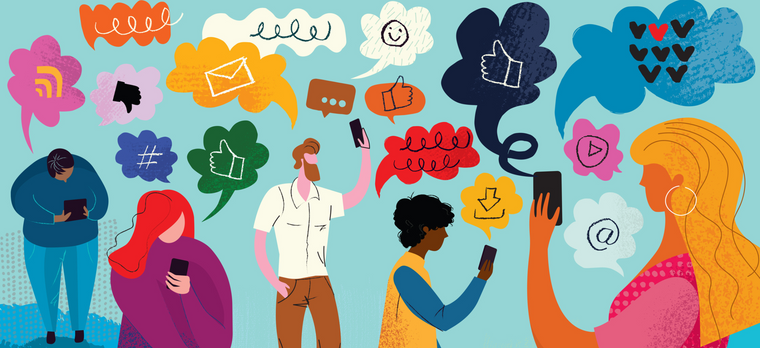The power of now
Behavioural Tech-heads: What technology needs to learn from behavioural science

Behavioural Tech-heads is a monthly series on Research World looking into what the technology industry can learn from behavioural science. It will cover the cognitive and behavioural biases and psychological principles that offer the greatest contribution to the tech industry.
In this instalment of Behavioural Tech-heads, we’ll be looking at The Power of Now. The ‘Power of Now’ is a bias in our preferences whereby we live for today at the expense of tomorrow. We put off things we don’t really want to do (e.g., chores, dieting) in favour of more immediately pleasurable things (e.g., watching TV, eating fast food).
What’s it all about?
Consider the following options:
£100 today, or £105 in a month’s time
£100 in a year, or £105 in a year and a month’s time
Most people would choose the £100 today rather than wait the extra month for another £5. However, when the identical choice is offered but with a year’s delay, this preference is reversed, and most people would wait another month for the extra £5. This preference reversal is a reflection of our bias towards the now and demonstrates our discounting of the future. We overvalue immediate rewards, giving less worth to those which come in the longer term. We want gratification now, not later. This is ‘The Power of Now’.
It’s why we struggle to:
Refuse a sweet treat (now) when we’re trying to lose weight (a reward that takes time)
Turn down a cigarette (now) when we’re trying to quit smoking (the rewards/consequences of which we only see in the long term)
Pay into a pension (a reward in the distant future) in favour of spending the money now
What’s the importance?
Humans are hard-wired to live in and for the present, not the future. We have limited self-control (challenge 1) when it comes to our immediate wants or needs (e.g., to eat, drink, rest). This means that in the world of today – where planning and withholding ourselves from immediate gratification can be critical to succeeding – this bias is our downfall.
‘The Power of Now’ is related to the natural human aversion to risk: the sooner the reward, the smaller the risk. A reward promised in the future comes with an amount of uncertainty (i.e. risk) – and consequently, we struggle to imagine what the future can look like (challenge 2). Therefore, the risk associated with a reward is eliminated the moment the reward is received – in the now. This is one way in which The Power of Now relates to evolution – for hunter-gatherers, the priority was to survive in the day, even in the moment.
As you’ve probably experienced, our fixation with living in the now has been amplified by rapid developments in digital technology. The many platforms/services we’ve signed up to heavily play on our limited self-control and inability to imagine what the future could be like. The knock-on effect is a reduction in our attention span. From 2000 to 2015 – it has reportedly shrunk from 12 seconds to 8 seconds (the mighty goldfish is 9 seconds). Who knows where it is today? Therefore, the window of opportunity for any brand, let alone a tech brand, has to influence someone’s decision is extremely limited (challenge 3).
 (Challenge 1: Limited self-control) + (Challenge 2: Inability to imagine/understand future realities) + (Challenge 3: Limited window to influence people’s decisions)
(Challenge 1: Limited self-control) + (Challenge 2: Inability to imagine/understand future realities) + (Challenge 3: Limited window to influence people’s decisions)
What’s the importance for tech brands?
Each challenge represents an intervention or moment when someone chooses one tech brand over another. Therefore, how can tech brands battle for the now and ensure you pick them? There are four steps tech brands should look to take:

Step 1: Be ever-present via small digital nudges – Long-form marketing strategies feel counterintuitive for tech brands, where immediate hits, likes and interactions are key in ensuring people engage with their brand regularly. ‘Small digital nudges’ are useful in this respect- as long as they’re timely and have substance. A digital nudge without substance will agitate a user rather than delight. To deliver a nudge that delights, it needs to play on Instant Gratification via a delivering the user some form of Reward. More about this in our previous article exploring Incentives.
Step 2: Help them imagine the future – At the same time, they should be helping users imagine what the future scenario or experience will be like. The more salient, visceral and scary it is, the better. For instance, food delivery apps such as Deliveroo or JustEat achieve this via the glossy images used to promote different restaurant options - how can you resist that pizza when it looks so good you can almost imagine eating it?
Step 3: Bind them to their decision – Connected to helping users imagine the future, getting them to commit to it at the same time via some form of pre-commitment tool/device will ensure they stick with their initial choice rather than switch to a competitor. A crude but highly effective way of doing this is by applying a cancellation fee. I’m sure you’ve experienced this via Uber, however, brands need to think of smarter and less draconian ways to bind users to the future.
Step 4: Our old friend: sunk cost fallacy – Lastly, deploy our good old friend sunk cost fallacy and rely on peoples’ innate inability to step away from a decision if they feel they’ve invested time, effort and, of course, money. An effective way of doing this is enabling them to build points or rewards which they can immediately cash in on their current purchase or build to something which isn’t available to everyone!


